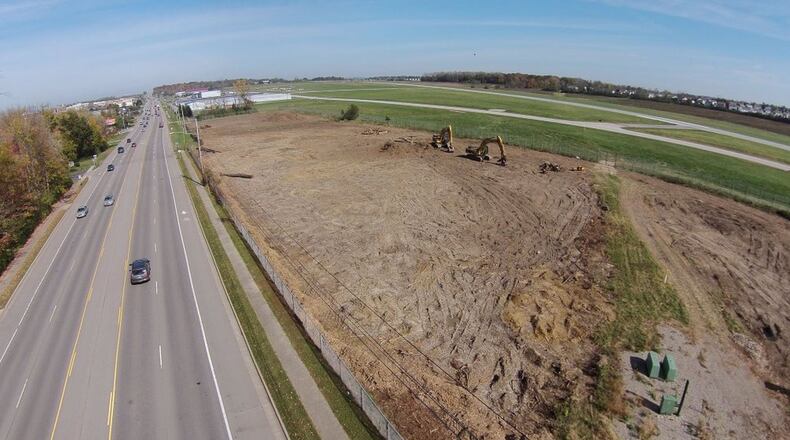One need is to emphasize “the Runway Protection Zones all the way around” the airport, which is bordered on the south, east and north by subdivisions and retail businesses, said Dayton International Airport Director Terry Slaybaugh.
RELATED: 5 things to know about JEDD deals
The RPZs are “not really talked about in the (current) plan,” Slaybaugh told fellow JEDD board members last week. “And that really – for the JEDD – …if you’re going to preserve the airport then we should talk about preserving the airport for aviation use and the things that make that possible. So the RPZs and the…..area around the runway has to be protected.”
The JEDD consists of three main traffic corridors: Washington Church Road, Austin Boulevard, and a portion of Miamisburg-Springboro Pike.
The airport accounts for 323 jobs, $10.77 million in annual payroll and a total economic output of $35.87 million, according to a study by the Ohio Department of Transportation.
RELATED: State study: Ohio airports help fuel jobs, economy; see how yours compares
Completed in 2006, the JEDD’s master plan is ripe for broad and more substantial changes, board members said. It’s a 23-page guide that was one of the first documents of its kind in the state 12 years ago, when JEDDs in Ohio were in their infancy.
And much has changed around the airport - and the JEDD - since the district that levies a 1.75 percent income tax was created in 2005. It now neighbors more than $200 million in infrastructure and economic expansion with the construction of the Austin Boulevard interchange of Interstate 75, the north side of Austin Landing and other nearby developments.
And more growth is in the works as the ODOT plans to improve the Austin/Ohio 741 intersection as a $300 million-plus Austin Landing South proposal at that location awaits approval.
RELATED: Miami Twp. sees JEDD revenues on the rise
Additional change could come with the DWB’s Airport Layout Plan, of which Dayton continues to await Federal Aviation Administration approval. The proposal calls for the relocation of Austin Boulevard north of the airport to allow for a runway extension.
“We’ve got a lot to look at now,” Slaybaugh said.
The JEDD board is considering the following, among other issues, in the new plan:
•Switching future commercial development plans from the west side of the airport – as the current plan calls for – to the east side;
RELATED: JEDD contracts set minimum payments for partners
•Conferring with ODOT on its Austin/Ohio 741 intersection plans before finalizing the update;
•Including the Airport Layout Plan pending FAA approval to the new document;
•Attaching two recently completed studies on best land uses and infrastructure;
•Including information from ODOT’s Ohio Airports Economic Impact Study.
RELATED: Study: Miami Twp. land near airport could land aviation, defense jobs
Future changes at the Austin/Ohio 741 will have a significant impact on development for the area and the JEDD, said board member Chris Snyder, Miami Twp.’s community development director.
“What ODOT does or doesn’t do on Austin from 741 to the (I-75) ramps is critically important,” he said.
RELATED: New hangar in works at Dayton-Wright Brothers Airport
With the construction of the I-75 interchange and the growth at Austin Landing, the traffic volume has increased at that intersection. The impact of congestion at the Austin/Ohio 741 crossing – and other areas of the JEDD - was an issue addressed in the original master plan.
“In the entire JEDD area, resources in the near term will most likely need to be focused on roadway improvements to complement the new interchange….to ensure a smooth traffic flow throughout the JEDD area,” the document states.
"Poor traffic flow could hamper the desirability of the area for future business development."
About the Author

